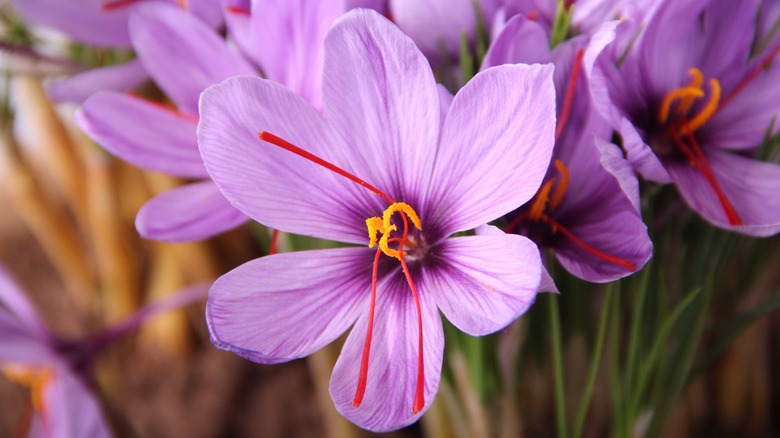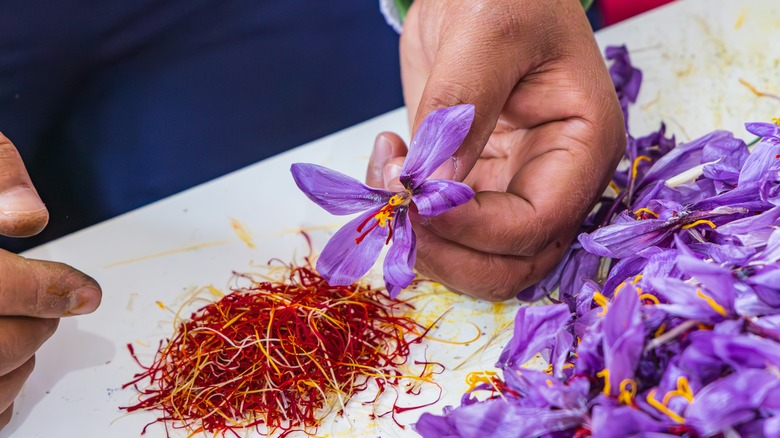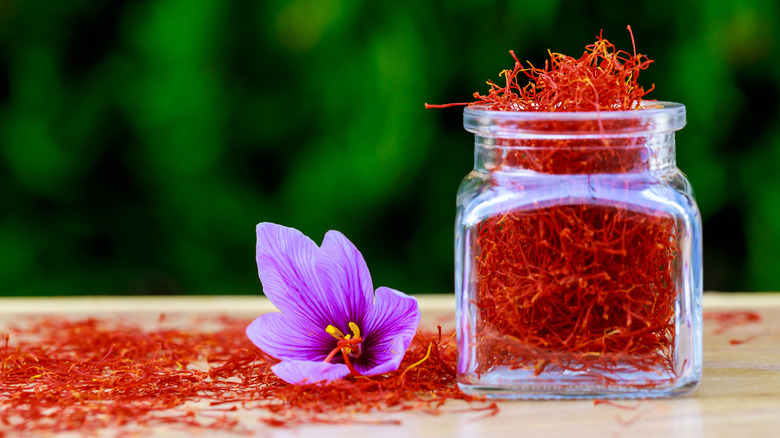Helpful Tips To Start Growing Saffron Indoors
Long ago, in ancient Greece, people began cultivating saffron. Today, the super spice decorates some of our favorite curries and syrups, leaving a subtle, sweet flavor in our dishes for us to enjoy. If you're a gardening or cooking enthusiast, you may have tried to grow saffron flowers in your own backyard and used the fruit of your labor to perfect that recipe you've been meaning to try. While amateur gardeners may opt to cultivate their saffron in the garden, others prefer to grow the spice indoors. That's right — rather than increasing your list of stunning plants to add to your garden, you might consider growing saffron in the comfort of your own home.
Saffron, commonly known as Crocus sativus, is the thread-like center of saffron flowers plucked from the flower after sprouting. The process of harvesting saffron begins in the summer, with sowing corms in an ideal environment for saffron flowers to grow. In mid-to-late fall, these flowers are delicately picked at an optimal time frame to avoid facing damage from the sun. While the process is fairly intense, the result is worth the wait, making saffron one of the most sought-after spices in the world. However, if you'd rather avoid the fickle nature of the weather, growing saffron indoors may be perfect for you.
How to grow saffron indoors
To grow saffron indoors, purchase or collect bulbs you'll need to plant the precious flower. It's easy to multiple types of crocus bulbs, so ensure you're purchasing the correct seeds by double-checking the name (Crocus sativus). Lay down 1 to 2 inches of planting gravel or garden sand before adding a layer of well-drained soil overtop (proper drainage is so important for house plants). Once the soil has been set, plant the bulbs so that their points face upward and place them 2 to 3 inches apart. Depending on how much saffron you anticipate using, the number of bulbs you plant can differ — consider assigning three threads of saffron to one person, multiplying by the number of members in your family, and multiplying again by the amount of saffron-based dishes made once a month.
For example, if you have a family of four and make saffron-based dishes once a month, you should expect to plant approximately 12 bulbs. Once you've planted the appropriate number of bulbs inside the potted plant, move the pot to a warm area that isn't too damp or overheated. This can be an open kitchen window, under well-lit countertops, or anywhere else in the house that might have the ideal conditions for saffron.
How to harvest and use indoor saffron
Following proper upkeep instructions is essential so that your saffron grows as healthy as possible. For starters, saffron flowers should be watered once every other day to ensure they stay moist without dying from over-hydration. After an estimated eight to 12 weeks, your flowers should begin sprouting and revealing three small red threads inside the bulb. Once these flowers open up, it's best to immediately start harvesting saffron by gently tweezing the threads, laying them to dry for two to three weeks in a dark and well-ventilated area, and storing them in a bag. Make sure the saffron threads are protected from humidity.
When it's time to put these tiny red threads to use, consider the many cooking methods in which saffron is used — you can grind it into a powder, steep it in water or hot tea, or sprinkle it directly into a dish. If you've followed through with an effective planting and harvesting routine, saffron's color and flavor will make a world of difference. Growing saffron at home is definitely worth the process.


